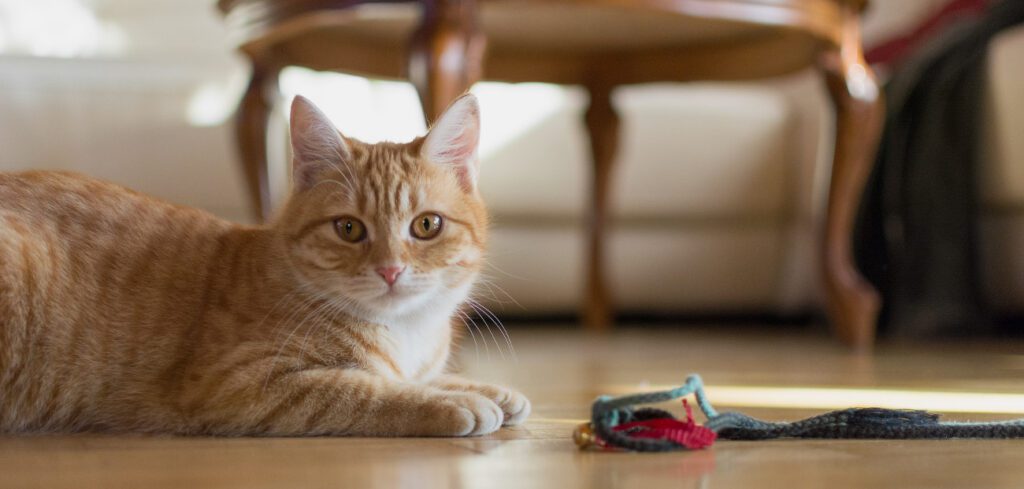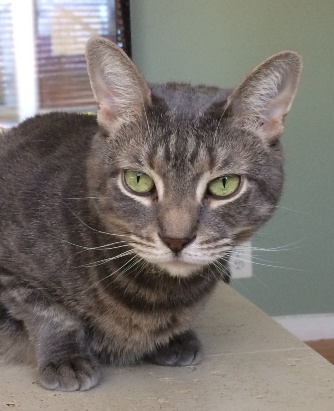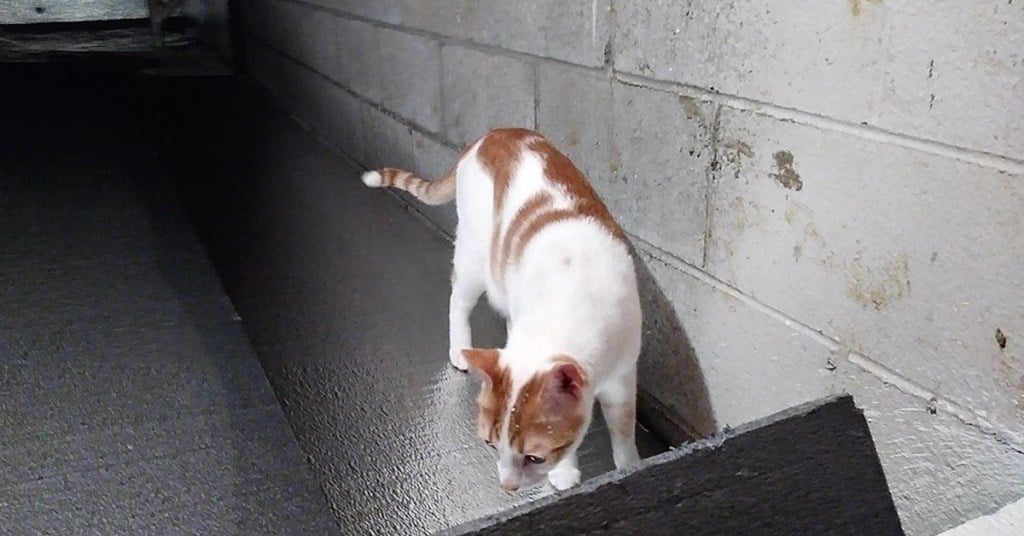In this article, we will be discussing the symptoms of black mold exposure in cats and how you can safeguard your feline friends. You’ll learn about the signs to look out for, such as respiratory issues, skin irritations, and changes in behavior, which may indicate that your cat has been exposed to black mold. We’ll also explore the steps you can take to prevent black mold in your home and protect your furry companions. So, if you’re concerned about your cat’s health and want to ensure their safety, keep reading to find out more.

Understanding Black Mold Exposure in Cats
Black mold, also known as Stachybotrys chartarum, is a type of fungus that can pose a serious health risk to both humans and animals. It typically appears as a black or dark greenish-black growth on various surfaces, such as walls, ceilings, and even food. While black mold exposure is a concern for humans, it is equally important to recognize the potential dangers it can pose to our feline friends.
What is black mold?
Black mold is a toxigenic fungus that produces mycotoxins, which are harmful substances that can cause health problems when inhaled or ingested. It thrives in warm, moist environments, making it a common issue in areas with high humidity levels. Black mold can release spores into the air, which can then be inhaled by cats, leading to various health issues.
How do cats get exposed to black mold?
Cats can become exposed to black mold in several ways. One common route of exposure is through inhalation. If black mold is present in the home or environment, the spores can become airborne and be inhaled by cats as they move around or groom themselves. Ingestion can also occur if a cat comes into contact with contaminated surfaces or food.
Why is black mold dangerous for cats?
Black mold exposure can have detrimental effects on a cat’s health. The mycotoxins produced by black mold can cause damage to various organs and systems within the body. Cats are particularly vulnerable to the effects of black mold due to their size and grooming habits. Additionally, cats with weakened immune systems or underlying health conditions may be at an increased risk of experiencing severe complications from black mold exposure.
Common symptoms of black mold exposure in cats
It is essential to be aware of the signs and symptoms of black mold exposure in cats. While the severity of symptoms may vary from one cat to another, some common indications include:
-
Respiratory issues: Cats exposed to black mold may experience respiratory problems such as coughing, wheezing, difficulty breathing, or sneezing. These symptoms are often a result of inhaling the spores or mycotoxins released by the mold.
-
Behavioral changes: Cats may exhibit changes in their behavior when exposed to black mold. They may become lethargic, lose interest in activities they once enjoyed, or display increased irritability or aggression.
-
Skin problems and allergies: Black mold exposure can lead to various skin issues in cats, including excessive itching, redness, rashes, or lesions. Cats may also develop allergies, which can manifest as ongoing sneezing, runny nose, or watery eyes.
-
Gastrointestinal disturbances: Cats can experience digestive problems as a result of black mold exposure. This may include vomiting, diarrhea, or a decreased appetite. These symptoms can also be accompanied by weight loss.
It is important to note that the symptoms of black mold exposure in cats may resemble other health issues. Therefore, it is crucial to consult a veterinarian if you notice any of these symptoms in your feline companion.
Identifying Black Mold in Your Home
As a responsible and caring cat owner, it is essential to ensure a safe living environment for your furry friend. Identifying and addressing black mold growth in your home is crucial to safeguarding your cat’s health.
Signs of black mold growth
Signs of black mold growth may not always be obvious, but there are certain signs you can look out for. Some indications of black mold in your home include:
-
Visible black or dark greenish-black growth: Check for any visible patches of black mold on walls, ceilings, or other surfaces in your home. These areas may appear damp or have a musty odor.
-
Musty smell: A strong, musty odor in certain areas of your home can be a sign of black mold growth. Pay attention to any areas with poor ventilation or high humidity levels.
-
Water damage: Black mold often thrives in areas with water damage. Look for signs of water stains, leaks, or dampness in your home, as these can indicate potential mold growth.
Areas in your home prone to black mold
Certain areas in your home are more prone to black mold growth, and it is important to pay special attention to these areas. Some common areas where black mold may develop include:
-
Bathrooms: Bathrooms, particularly those without proper ventilation, are susceptible to mold growth due to the high levels of humidity and moisture present.
-
Basements: Basements are often damp and lack adequate airflow, making them ideal environments for black mold growth.
-
Kitchens: The presence of water and food sources in kitchens can contribute to mold growth. Pay particular attention to areas around sinks, dishwashers, and refrigerators.
-
Laundry rooms: Washing machines and dryers can produce moisture, creating an environment suitable for mold growth. Inspect these areas regularly.
Effect of black mold on indoor air quality
Black mold can significantly impact the indoor air quality of your home. As the mold releases spores into the air, they can be inhaled by both humans and cats, leading to health issues. Poor indoor air quality can exacerbate respiratory symptoms in cats, particularly those already exposed to black mold.
Regularly inspecting your home for black mold growth, addressing any water damage or leaks promptly, and ensuring proper ventilation can help maintain a healthy living environment for both you and your feline companion.
Detecting Black Mold Exposure in Cats
Detecting black mold exposure in cats can be challenging since the symptoms can overlap with other health issues. However, being mindful of your cat’s behavior and any changes can help identify potential problems.
Behavioral changes in cats
Cats may exhibit various behavioral changes when exposed to black mold. Pay attention to any alterations in your cat’s behavior, such as increased aggression, lethargy, or a lack of interest in regular activities. These changes may indicate that something is affecting your cat’s well-being.
Respiratory issues
Respiratory problems are common in cats exposed to black mold. If you notice your cat coughing, wheezing, or having difficulty breathing, it is crucial to consult a veterinarian. These symptoms can be indicative of respiratory distress and may warrant immediate medical attention.
Skin problems and allergies
Black mold exposure can lead to skin problems and allergies in cats. Keep an eye out for excessive itching, redness, rashes, or lesions on your cat’s skin. Frequent scratching or grooming can also be signs that your cat is experiencing skin discomfort.
Gastrointestinal disturbances
Cats exposed to black mold may experience gastrointestinal issues such as vomiting, diarrhea, or a decreased appetite. If your cat shows any of these symptoms, it is important to consult with a veterinarian to rule out any potential health issues.
Early detection of black mold exposure symptoms in your cat is essential for prompt intervention and treatment. Consult a veterinarian to determine the underlying cause and appropriate course of action.
Preventing Black Mold Exposure
Taking proactive measures to prevent black mold growth in your home is crucial for safeguarding your cat’s health. Here are some preventative steps you can take:
Keep your home clean and dry
Maintaining a clean and dry living environment is key to preventing black mold growth. Regularly clean surfaces and areas prone to moisture, such as bathrooms and kitchens. Promptly address any spills or leaks to prevent the accumulation of moisture.
Proper ventilation and air circulation
Ensure that your home has proper ventilation and airflow. This can be achieved by using exhaust fans in bathrooms and kitchens, opening windows for fresh air, and utilizing air conditioning or dehumidifiers to regulate humidity levels.
Regularly inspecting for moisture or leaks
Regularly inspect your home for signs of water damage, leaks, or moisture buildup. Pay attention to areas around pipes, ceilings, and windows. Promptly address any issues to prevent mold growth.
Using mold inhibitors and cleaners
Consider using mold inhibitors and cleaners in areas prone to black mold growth. These products can help prevent the growth and spread of mold. However, it is essential to choose pet-friendly options to ensure the safety of your cat.

Treatment for Black Mold Exposure in Cats
If you suspect your cat has been exposed to black mold or is displaying symptoms of exposure, it is crucial to seek veterinary care. A veterinarian can assess your cat’s condition, conduct necessary tests, and provide appropriate treatment options.
Consulting a veterinarian
The first step in treating black mold exposure in cats is consulting a veterinarian. Explain your concerns and provide information about your cat’s symptoms and any potential exposure to black mold. The veterinarian will conduct a physical examination and may recommend further diagnostic tests or consultations with specialists if necessary.
Testing for black mold in the environment
To determine the extent of black mold exposure, testing the environment for mold spores may be necessary. A veterinarian or environmental specialist may collect samples from your home to assess the presence of mold and identify the type of mold present.
Addressing the underlying cause
Treating black mold exposure in cats involves addressing the underlying cause. If mold growth is detected in your home, remediation and prevention measures should be implemented to eliminate the mold and prevent future growth.
Treating specific symptoms
Treatment for black mold exposure in cats will depend on the severity of symptoms and the individual cat’s medical condition. Veterinary care may include medications to alleviate respiratory issues, skin treatments for allergies or skin problems, and supportive care to address gastrointestinal disturbances.
Veterinary Care and Support
Professional guidance and veterinary care are crucial in managing black mold exposure in cats. A veterinarian has the knowledge and expertise to diagnose and treat your cat’s symptoms effectively. Regular check-ups and monitoring for any long-term health effects are essential in ensuring your cat’s well-being.
Importance of professional guidance
Seeking professional guidance ensures that your cat receives the appropriate care and treatment for black mold exposure. A veterinarian can help properly diagnose your cat’s condition, determine the underlying cause, and develop a tailored treatment plan.
Treatment options for black mold exposure
Treatment options for black mold exposure in cats may vary depending on the individual cat’s symptoms and medical history. They may include medications to alleviate respiratory distress, antihistamines for allergies, or topical treatments for skin problems. Your veterinarian will guide you through the treatment process and make recommendations based on your cat’s specific needs.
Monitoring and follow-up care
After initial treatment, it is important to follow up with your veterinarian to monitor your cat’s progress and address any ongoing health issues. Regular check-ups will help ensure that your cat’s health is monitored and any potential long-term effects of black mold exposure are managed promptly.

Promoting a Healthy Environment for Your Cat
Creating a healthy living environment for your cat is essential in preventing black mold exposure and other potential health hazards. Here are some ways to promote a healthy environment for your feline friend:
Regular cleaning and maintenance
Regular cleaning of your home, including floors, surfaces, and litter boxes, is crucial in preventing the build-up of mold and other harmful substances. Create a cleaning routine tailored to your home’s needs.
Reducing moisture and humidity
Maintaining a low humidity level in your home can help prevent black mold growth. Use dehumidifiers, air conditioners, or fans to reduce moisture levels in areas prone to humidity.
Inspecting cat items and toys
Regularly inspect your cat’s items, including bedding, toys, and scratching posts, for signs of mold or moisture. Clean or replace any items that show signs of damage or mold growth.
Providing a well-ventilated living space
Ensure that your cat’s living space is well-ventilated. Keep windows open for fresh air and consider using fans or air purifiers to improve air circulation. Good ventilation can help prevent the build-up of mold and other harmful substances.
Raising Awareness about Black Mold
Raising awareness about black mold exposure in cats is crucial in ensuring the well-being of our feline friends. By sharing information with fellow cat owners, we can collectively work towards preventing and detecting black mold exposure.
Sharing information with other cat owners
Spread the word about black mold exposure in cats by sharing information with other cat owners. Discuss the potential dangers and symptoms of black mold exposure, as well as prevention and treatment options.
Educating about prevention and detection
Educate others about the importance of prevention and detection when it comes to black mold exposure. Provide tips and guidance on creating a safe and healthy living environment for cats, emphasizing the significance of proper ventilation, cleanliness, and regular inspections.
Importance of early intervention
Emphasize the importance of early intervention in addressing potential black mold exposure in cats. Encourage cat owners to seek veterinary care promptly if they suspect their cats may be experiencing symptoms related to black mold exposure.

Recognizing the Impact of Black Mold Exposure
Understanding the potential long-term health effects of black mold exposure in cats is important in recognizing the severity of this issue. Both cats and humans can be at risk when exposed to black mold.
Long-term health effects in cats
Black mold exposure can have long-term health effects on cats. Chronic respiratory issues, compromised immune systems, and allergies are among the potential consequences. Regular monitoring and veterinary care are essential in managing these long-term effects.
Potential risks to human health
Black mold exposure can also pose risks to human health. Humans exposed to black mold may experience respiratory problems, allergies, or other health issues. It is important to address black mold growth in your home to protect both your cat and yourself from potential health hazards.
Taking black mold exposure seriously
Black mold exposure should be taken seriously due to its potential health risks for both cats and humans. By recognizing the impact of black mold exposure and taking proactive steps to prevent and address it, we can ensure the well-being of our feline friends and ourselves.
Conclusion
Safeguarding the health of our feline friends is essential, and recognizing the symptoms of black mold exposure is a significant step in achieving this. By understanding the dangers of black mold, preventing its growth, and seeking prompt veterinary care when necessary, we can protect our cats from the potential harm it poses. Remember to prioritize the well-being of your beloved feline friends and take proactive measures to provide them with a safe and healthy living environment.
